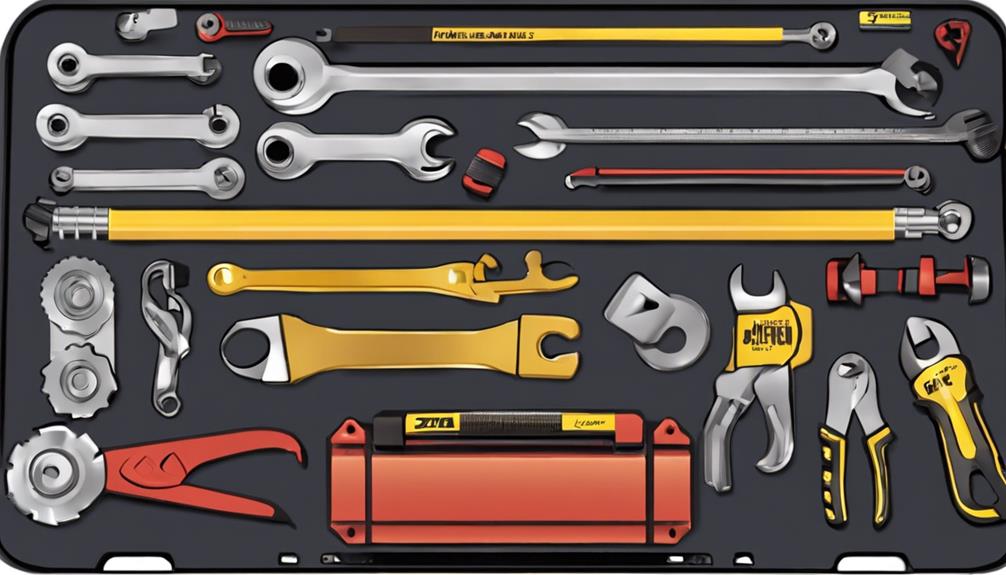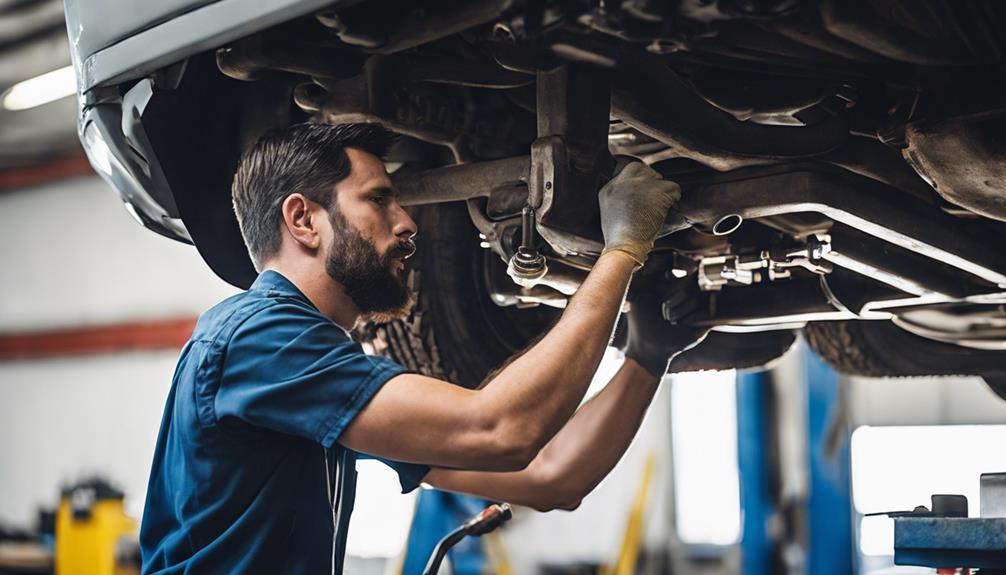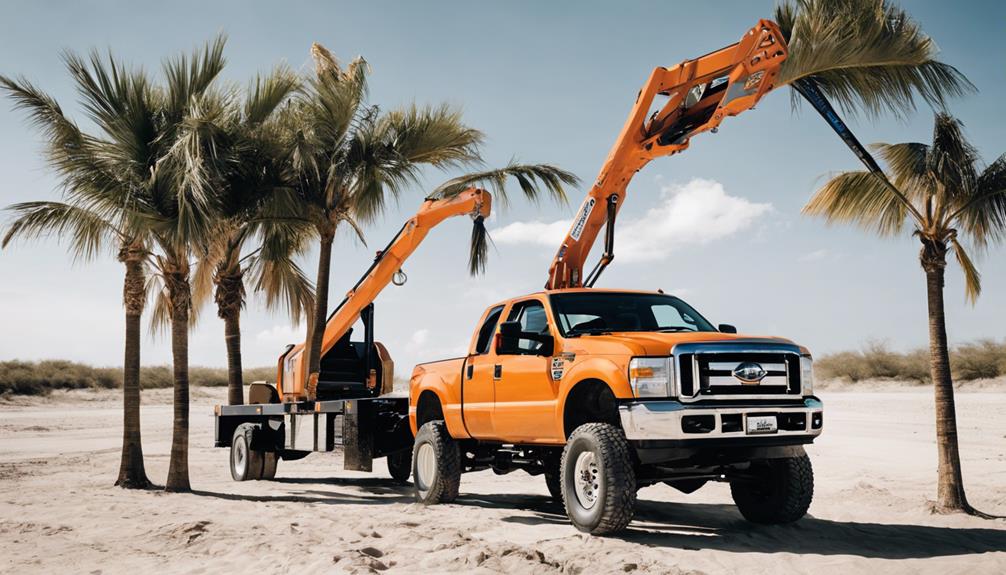When installing a truck lift kit in Rio Grande Valley, you must carefully select the right type of lift kit to meet your specific requirements, whether it's a suspension lift kit, body lift kit, or leveling kit. Ensuring a successful installation involves not only choosing the correct kit but also paying attention to compatibility, professional installation, and the long-term impact on your vehicle. By following these essential tips, you can make the most of your truck lift kit installation and enjoy a smoother ride with enhanced performance.
Key Takeaways
- Choose the right lift kit type and size for your truck's needs and preferences.
- Use proper tools and techniques for precise installation and alignment.
- Regularly maintain and inspect the lift kit components for optimal performance.
- Ensure compatibility with your truck model and follow manufacturer's guidelines for maintenance.
Benefits of Installing a Lift Kit
When installing a lift kit on your truck, you can expect significant improvements in ground clearance, tire size accommodation, visibility enhancement, aesthetic appeal, and overall handling and stability during off-road excursions. Suspension lift kits play an important role in elevating your truck's undercarriage, allowing it to conquer challenging terrains effortlessly. By increasing the distance between the ground and your truck's frame, lift kits provide ample space for larger tires, which not only enhance the vehicle's off-road capabilities but also improve traction on uneven surfaces. Additionally, the heightened vantage point achieved through lift kits guarantees better visibility, enabling you to navigate through obstacles with confidence. In addition, the rugged aesthetic appeal brought about by lift kits adds a touch of personalization to your truck, setting it apart from the rest. Finally, the corrected stance provided by lift kits contributes to better handling and stability, especially when setting off on adventurous off-road journeys.
Choosing the Right Lift Kit
To guarantee peak performance and compatibility with your truck, carefully consider the purpose of the lift kit before making a selection. When choosing the right lift kit, it's important to assess your specific needs and preferences. Here are some key points to keep in mind:
- Purpose: Determine if you require the lift kit for off-road adventures, enhancing the visual appeal of your truck, or improving its towing capabilities.
- Type: Select between suspension lift kits for superior ground clearance and performance, body lift kits for a more budget-friendly modification, or leveling kits to achieve balance and accommodate larger tires.
- Compatibility: Make sure the lift kit is compatible with your truck model to guarantee a proper fit and avoid any potential issues down the road.
Necessary Tools for Installation

Common tools required for the installation of truck lift kits encompass a range of essentials including wrenches, sockets, a ratchet set, a torque wrench, and jack stands. In addition to these basics, specialized tools such as spring compressors, ball joint separators, and alignment tools may be necessary for specific lift kit installations. Ensuring you have the essential tools is critical for the successful completion of the job without causing damage to your vehicle components. Some lift kit manufacturers provide detailed instructions on the specific tools required for their kits to guarantee a proper installation process. By having the right tools readily available, you can streamline the installation process, making it smoother and increasing the likelihood of achieving your desired results.
| Tools | Description | Usage |
|---|---|---|
| Wrenches | Various sizes for tightening and loosening nuts and bolts | Securing components |
| Sockets | Different sizes to fit various fasteners | Turning nuts and bolts |
| Ratchet Set | Allows for quick tightening and loosening of fasteners | Speeding up the installation |
Proper Installation Techniques
Shifting from the discussion on necessary tools, ensuring the proper alignment during your truck lift kit installation is paramount to prevent potential issues with vehicle handling and tire wear. Proper installation techniques can make a significant difference in how your lifted truck performs on and off the road. Here are some key points to consider:
- Precision is Key: Take your time and double-check all measurements and adjustments to consider everything is aligned correctly.
- Tighten with Care: Use a torque wrench to consider all bolts to the manufacturer's specifications to prevent over-tightening and potential damage.
- Test and Adjust: After installation, test your vehicle in a safe environment and make any necessary adjustments to optimize performance.
Following these techniques will not only enhance the effectiveness of your lift kit but also contribute to a safer and more enjoyable driving experience.
Maintenance Tips for Lift Kits

Regularly inspecting and tightening all bolts and components is important to prevent loosening or damage in your lift kit maintenance routine. Keeping suspension components clean and free from debris is essential to maintain peak performance. Check for leaks in shocks, struts, and other components regularly to address any issues promptly. Following the manufacturer's guidelines for maintenance intervals and service requirements will guarantee the longevity of your lift kit.
To emphasize the key maintenance points for lift kits, refer to the table below:
| Maintenance Tips for Lift Kits | |
|---|---|
| 1. Inspect and tighten bolts and components regularly | |
| 2. Keep suspension components clean and debris-free | |
| 3. Check for leaks in shocks, struts, and other components |

No Responses